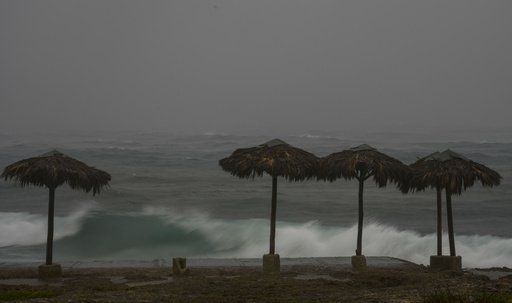
Havana is grappling with the aftermath of Hurricane Rafael, a powerful Category 3 storm that tore through the island on Thursday, severely affecting the country’s power distribution system.
As the day progressed, the full extent of destruction remained uncertain, yet meteorologists cautioned that the storm could provoke “life-threatening” conditions including storm surges, intense winds, and flash flooding following its earlier devastation of Jamaica and the Cayman Islands.
On Wednesday night, relentless waves pounded Havana’s coastline, accompanied by howling winds and torrential rain that struck the historic city’s architecture, leaving debris and downed trees across inundated streets.
The hurricane weakened to a Category 2 storm as it headed toward the Gulf of Mexico, particularly affecting northern Mexico and southern Texas, according to reports from the National Hurricane Center in Miami.
Many residents of Cuba found themselves in an all-too-familiar position, coping with the fallout of the previous night. This comes on the heels of a tumultuous few weeks within the nation.
Earlier in October, Cuba faced a sequence of crises, including widespread power outages lasting for days due to an ongoing energy dilemma. Shortly afterward, the region was struck by another formidable hurricane, resulting in at least six fatalities in eastern Cuba.
These successive events have fueled dissatisfaction among the populace, exacerbated by the prevailing economic hardships that have led many Cubans to seek opportunities abroad.
In response to the severe weather, the State Department issued warnings against travel to Cuba, and local officials urged residents to take shelter.
Classes and public transportation services were halted in numerous regions, while authorities suspended both incoming and outgoing flights in Havana and Varadero.
As a precautionary measure, thousands in the western part of Cuba were evacuated, with individuals like 72-year-old retiree Silvia Pérez, living along the coast, rushing to make necessary preparations.
“This is not a night I want to sleep through, with the winds howling and the trees swaying,” Pérez expressed her fears for her friends and family.
Concerns have also been raised due to the storm’s impact, which left the Cayman Islands and Jamaica grappling with power outages, flooding, and landslides.
Rafael marks the 17th named storm of this hurricane season.
Looking ahead, the National Oceanic and Atmospheric Administration has forecasted an above-average 2024 hurricane season, predicting between 17 to 25 named storms, which may include up to 13 hurricanes and four major hurricanes.
An average season in the Atlantic typically witnesses 14 named storms, with seven becoming hurricanes and three classified as major hurricanes.
